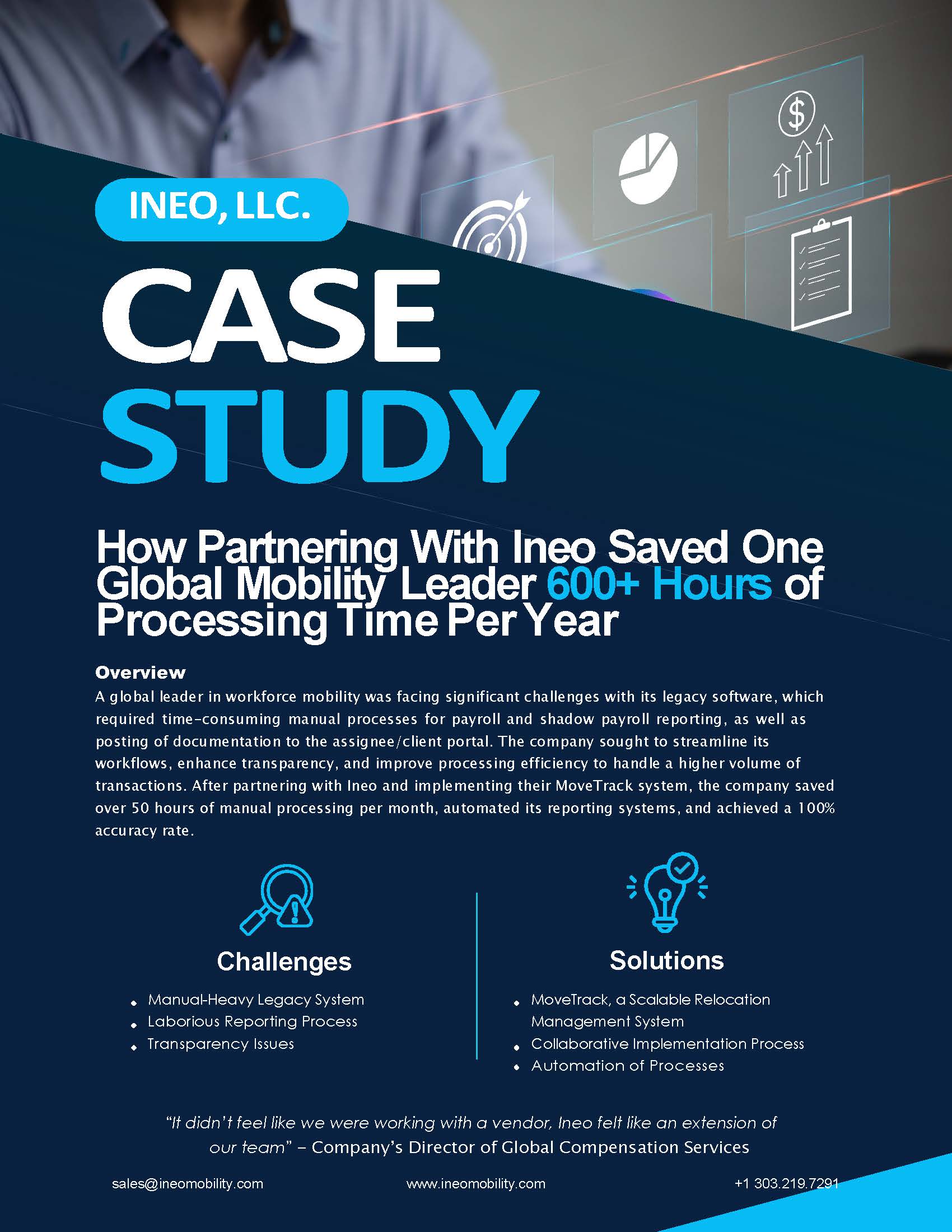Parlez-vous Mobility Management? 11 Key Terms Explained

Global mobility management can be a foreign concept if you’ve yet to implement or experience the program at your company. However, having an understanding of the basic terms and concepts is a great starting point.
From relocation payroll to tax policies and everything in between, there’s a lot of information to learn and keep up with if you plan on going on an assignment or are the one managing the process.
Whether you’re new to the world of global mobility management or just need a quick refresher, here are 11 key terms, explained, that employees and mobility professionals alike should know.
Relocation
Arguably the most important term when it comes to global mobility, relocation is the term used when an employee is relocated, either temporarily or permanently. Depending on the type of relocation, the employee will either be an assignee or a transferee:
- Assignee: An employee on assignment, which is temporary (typically for international trips outside of the US).
- Transferee: An employee who made a permanent transfer from one location to another and is not intended to come back (often used for domestic trips).
- Moving expenses: Generally speaking, in the United States, moving expenses are not deductible for federal tax purposes but are deductible in certain states. Your employer may reimburse you for deductible moving expenses. If nondeductible moving expenses are reimbursed, the reimbursement itself becomes taxable income and is reported to the IRS as an addition to taxable wages.
- Reimbursement: There are two plans used by companies to pay out reimbursements for moving expenses, Accountable Plans and Nonaccountable Plans. Most corporate executives will be reimbursed partly under an accountable plan and partly under a nonaccountable plan. How you report your reimbursements depends on which of the two plans you were paid.
Compliance
In mobility terms, compliance is when you ensure that both the company and your employees are remaining compliant with local tax policies when the employee is either on assignment or transferred.
- Multiple currencies: For global assignments, there may be multiple currencies involved in payroll and reimbursements of expenses.
- Multiple local taxes: Also called “multiple locals” there are some places that have multiple local taxes. To help manage the sometimes complex process of keeping track of different state and local taxes, employers can use a global mobility software like Ineo’s TechSuite that manages and calculates multiple locals in one place.
Payroll and taxes
Global mobility management centers around payroll and taxes, with an emphasis on ensuring that both the company and the employee are compliant with local tax policies. When it comes time to calculate taxes, there are a few things that can make the process easier for those who have relocated.
- Gross-up: A gross-up refers to a technique some employers use to ensure that you are not “out-of-pocket” for extra personal income taxes on your transfer/assignment. This initial calculation is done because, when you are reimbursed for a nondeductible IRS moving expense, the reimbursement becomes a taxable income burden to you.
- Lump sum payment: Some employers give their transferred employees a lump-sum payment to cover both deductible and nondeductible moving expenses. For state tax purposes, you may be entitled to deduct your actual cost for your household goods move and travel and lodging portion of your final move since the entire amount of the lump-sum payment is reported as taxable wages on Form W-2.
- True-up: At year end, a true up happens when an employer adjusts the employee to their associated tax buckets to make sure they’re compliant with the federal, state, and social security taxes.
- Delta: Simply put, a delta is a difference. After calculating supplemental withholdings throughout the year, a true up will take place at the end of the year and will result in a delta report.
- Tax equalization: Tax equalization is a policy that ensures that when an employee goes on assignment, they are essentially paying the same amount in taxes as they would had they stayed at home. To do this, the employer pays all the actual taxes that are due in both the home and host location. The employee has a hypothetical tax withheld throughout the year as an estimate of what s/he would have paid on this base compensation (salary and bonus, etc.). The employer uses these withholdings to fund overall assignment costs.
Looking for more information to understand the tax complexities associated with global mobility? Ineo’s 2022 Tax Mobility Advisor helps employees leverage and plan for the significant tax implications and compliance issues associated with their move or assignment.
Global Mobility Resources
Learn more about what’s going on at Ineo and insights into the complex world of global mobility from the industry’s top thought leaders and innovators.
Request A Demo
Whether you are new to the world of global mobility or you’ve been in the business for a while, Ineo is here to assist you.
The best way to learn how Ineo’s global mobility software can help your company revolutionize your global mobility program and support your business strategy is to see it in a demo.
Fill out this form to get started today.
Get Started







